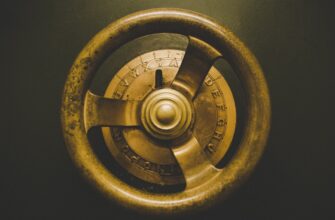When it comes to managing digital assets, a secure crypto wallet is essential. A secure crypto wallet with password tutorial is a critical step for anyone handling cryptocurrencies. This guide will walk you through the process of creating a secure crypto wallet with a password, ensuring your digital assets remain protected.
## Why a Secure Crypto Wallet Matters
A crypto wallet is a digital tool that stores your cryptocurrency keys and addresses. Without proper security, your assets are at risk of theft or loss. A secure crypto wallet with password tutorial ensures you have control over your private keys and can protect your funds from unauthorized access.
## Steps to Create a Secure Crypto Wallet with a Password
1. **Choose a Reputable Wallet Provider**: Select a trusted wallet provider that offers strong security features. Options include Ledger, Trezor, and software wallets like MetaMask.
2. **Generate a Strong Password**: Create a unique, complex password that includes a mix of letters, numbers, and symbols. Avoid using common words or personal information.
3. **Use a Password Manager**: Store your password securely using a password manager like Bitwarden or 1Password. This reduces the risk of password leaks.
4. **Backup Your Wallet**: Ensure you have a backup of your wallet’s recovery phrase. Store it in a safe, offline location.
5. **Enable Two-Factor Authentication (2FA)**: Add an extra layer of security by enabling 2FA on your wallet.
## Best Practices for Password Security
– **Avoid Common Passwords**: Do not use easily guessable passwords like ‘password’ or ‘123456’.
– **Use a Password Generator**: Tools like https://www.passwordgenerator.net/ can create strong, random passwords.
– **Regularly Update Passwords**: Change your wallet password periodically to minimize the risk of breaches.
– **Do Not Share Your Password**: Never share your wallet password with anyone, even if they claim to be from a trusted source.
## Additional Security Tips
– **Use a Hardware Wallet**: For maximum security, consider using a hardware wallet like Ledger or Trezor, which stores keys offline.
– **Monitor Transactions**: Regularly check your wallet for suspicious activity. If you notice unauthorized transactions, report them immediately.
– **Stay Informed**: Keep up-to-date with the latest security threats and best practices for crypto wallet protection.
## FAQ: Common Questions About Secure Crypto Wallets
**Q: Why is a password important for a crypto wallet?**
A: A password acts as the first line of defense against unauthorized access. Without a strong password, your wallet is vulnerable to hacking.
**Q: Can I use a password manager for my crypto wallet?**
A: Yes, using a password manager like Bitwarden or 1Password is highly recommended. It securely stores your password and reduces the risk of leaks.
**Q: What if I lose my seed phrase?**
A: Losing your seed phrase can result in permanent loss of your funds. Always store it in a secure, offline location and never share it with anyone.
**Q: How do I check if a website is a phishing scam?**
A: Look for signs like suspicious URLs, poor design, or urgent requests for personal information. Always verify the website’s authenticity before entering your wallet details.
By following these steps and best practices, you can create a secure crypto wallet with a password and protect your digital assets from potential threats. Remember, security is a continuous process, and staying vigilant is key to maintaining the safety of your cryptocurrency holdings.
## Conclusion
Creating a secure crypto wallet with a password is a fundamental step in protecting your digital assets. By choosing a reputable wallet provider, using strong passwords, and implementing additional security measures, you can significantly reduce the risk of theft or loss. Stay informed, stay vigilant, and take proactive steps to ensure the safety of your cryptocurrency investments.








